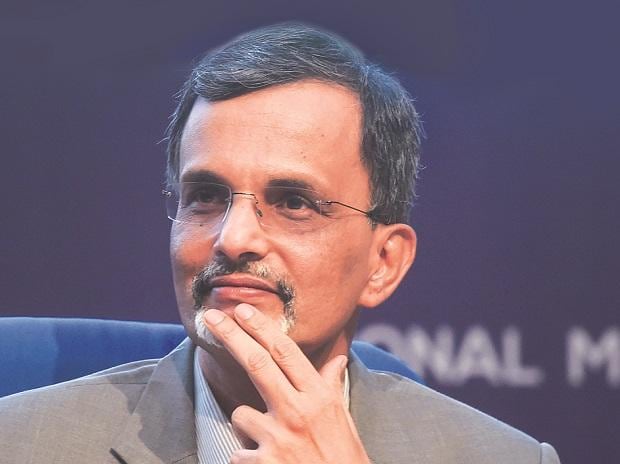[ad_1]
India’s gross domestic product (GDP) growth for the current fiscal year (FY23) is now expected to be between 6.5 and 7 per cent, Chief Economic Advisor V Anantha Nageswaran said on Monday. This was for the first time a government official said real economic growth may not exceed 7 per cent this fiscal year.
Since the April-June GDP print, a number of agencies, including the International Monetary Fund (IMF) and the Reserve Bank of India, have lowered their GDP forecast for India on the back of uneven pick-up in demand and global headwinds caused by the war in Europe.
The IMF sees FY23 GDP growth at 6.8 per cent compared with 7.4 per cent earlier, while the RBI has cut its forecast to 7 per cent from 7.2 per cent.
“Growth is expected to be around 6.5-7 per cent this year, somewhat lower than our earlier expectations. However, India will still be one of the fastest growing major economies and only Saudi Arabia is expected to grow faster than us this year,” Nageswaran said at an event organised by industry body Indian Chamber of Commerce.
While India was facing high headline retail inflation, it was still moderate compared with many other economies which target an inflation of 2 per cent but are closer to 8-10 per cent, Nageswaran said.
Central banks across the world have aggressively targeted inflation caused by spiking of commodity prices due to Russia’s invasion of Ukraine, by hiking key interest rates massively this year, including the RBI. This has impacted the currencies and trade balance of emerging markets.
Nageswaran said other western central banks were not indicating further rate hikes as much as the US Federal Reserve. “Only the Fed is being more aggressive. Maybe synchornised monetary tightening is becoming less synchronized, which is good news for emerging markets.”
“The current period of uncertainties has perhaps been prolonged and with potential of significantly large impact on global economic well being,” he said.
Nageswaran listed a number of reasons as to why India came out of the Covid-19 pandemic and the current geopolitical situation in a better shape than developed economies and many developing peers. One of them was that India did not indiscriminately provide monetary stimulus during the pandemic. “We did not push too much money into the system, did not over stimulate as if there was no tomorrow. The relief provided by the government and the RBI was gradual and targeted,” he said.
Going ahead, Nageswaran said the focus needs to continue on macro-economic stability, especially in the face of headwinds. He said the rupee had been allowed to depreciate and the use of forex reserves had been judicious as a matter of strategy.
“The government should focus on completing ongoing capex projects in the public sector rather than new ones, and private capex should be further facilitated,” he said.
[ad_2]
Source link




